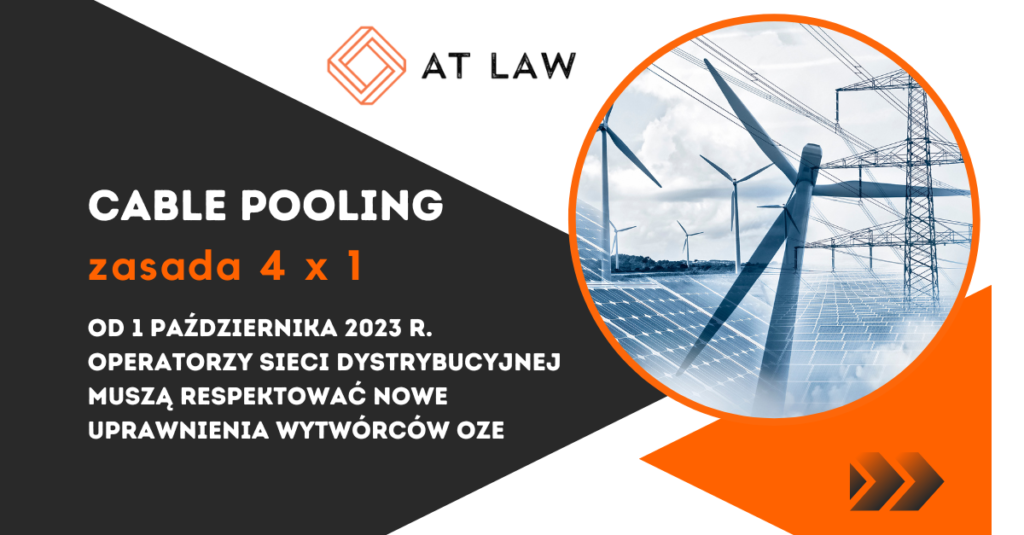
Cable pooling
The modernization of Polish power grids will take many more years. It turned out that the possibilities of connecting new RES sources can also be increased by eliminating unnecessary legal restrictions. As part of the Energy Law and RES compendium, AT LAW presents several general principles of cable pooling, which the Senate introduced into the draft of this act as part of the legislator’s work on the amendment to the Energy Law, which came into force on 1 October 2023. Let’s hope for more such accurate throws.
Cable pooling, i.e. the possibility of connecting two or more RES installations at one connection point, has existed in the Polish energy law since 1 October 2023. In the case of new regulations with a similar, significant impact on the functioning of the energy market, the interval between the entry into force of the regulation and the establishment of a clear practice of operation is usually significant, and this is likely to be the case in this case. In what direction will this process go and what can RES energy producers count on in practice?
Many entities are interested in using cable pooling, in particular with regard to existing wind farms (remember that the new capabilities resulting from cable pooling can also be applied in the case of connecting two new RES units at the same time). Nevertheless, the manner in which the new regulations are applied, including by DSOs, is subject to great uncertainty. After only a few months of the new regulations being in force, the President of ERO took up some of the topics related to cable pooling in one of his positions, which on the one hand proves the already existing problems in the practical application of the new regulations, and on the other, it seems to be the desire to support RES producers in the unequal fight against DSOs.
Starting from the basics, cable pooling regulations can only be applied to:
– RES installations,
– connected at one connection point,
– to the power grid with a nominal voltage higher than 1 kV.
It is worth noting that cable pooling cannot be used to connect an electricity storage facility as an installation independent of the existing or new RES installation. Electricity storage can be used as part of cable pooling only as a new element of an old (e.g. modernized) or new RES installation.
In the reality of the overload of power grids that has existed for several years, an important novelty, which results in the practical usefulness of cable pooling, is the possibility of connecting another RES installation with a connection capacity less than or equal to the installed electrical capacity of this RES installation.
Cable pooling is based on the 4×1 principle – for all RES installations, one connection condition will be issued, one connection agreement and one contract for the provision of transmission or distribution services will be concluded, as well as one entity will be responsible for trade balancing. In the event that the owner of the next installation is an entity other than the owner of the previously connected installation, the above rule will be associated with the need for close cooperation between entities interested in the use of cable pooling. This cooperation must be based on an agreement, the necessary elements of which have been explicitly listed in the Energy Law. The nature of the cooperation of entities connected as part of cable pooling is determined, among m.in, by the following factors:
– the need to designate one entity representing all parties to the agreement in relation to the operator and the President of the Energy Regulatory Office,
– joint and several liability of all parties to the agreement towards the power system operator for exceeding the connection capacity,
– joint and several liability of all parties to the agreement for obligations arising from the contract for the provision of electricity transmission or distribution services.
It should be remembered that cable pooling does not have to be a multi-entity solution, it can also be used by one and the same entity, e.g. building a PV installation at an already operating wind farm.
Michał Łysakowski
Partner at AT LAW Łysakowski Zajkowski Radcowie Prawni Spółka Partnera

